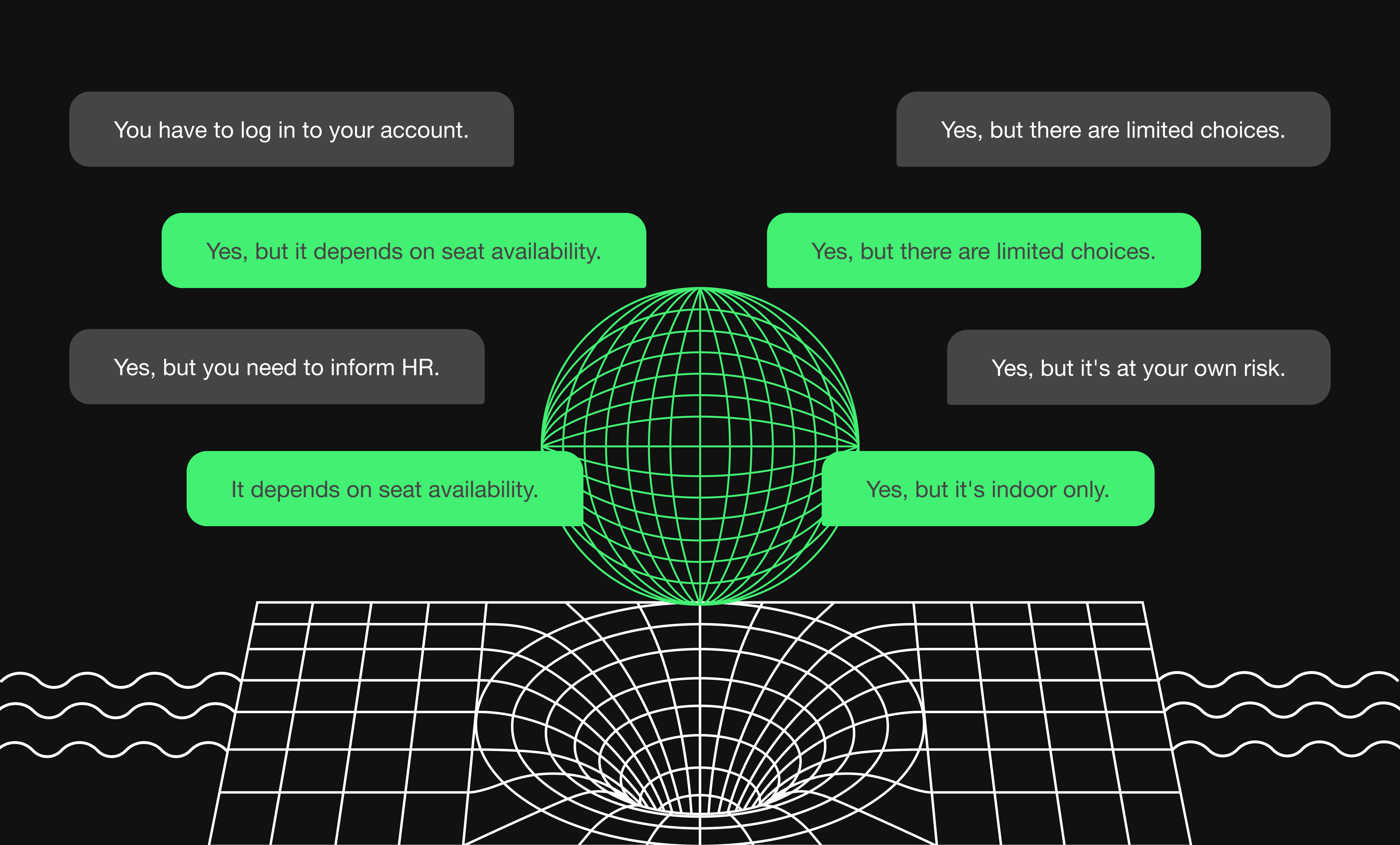Mobile app development continues to grow year by year, and we can predict that 2023 will be no different than the years before.
We've noticed that our clients are getting more and more interested in developing innovative mobile apps. So we stay on the lookout for the latest technology trends shaping the current digital landscape, trending programming languages, and crucial security updates. There were over 230 billion annual app downloads in the recent year, and with the rapidly growing app development sector more is to be expected.
In this article, we want to share some groundbreaking mobile app development trends in 2023 that will revolutionize the digital realm in the coming years. Let’s start!
Tech-related mobile app development trends you need to pay attention to in 2023
We’re covering the tech side of mobile app development as it shapes the way the apps are being built, be it messaging, travel, or shopping apps. Without further ado, let’s get to the 14 trends we found crucial for mobile app development in 2023
1. Apps for wearables
Wearables are the most popular IoT trend that has been ongoing for the past few years. Initially, it all began with fitness trackers and step counters.
Now it has turned into a major system adopted for personal use globally. From gaming armbands to smart glasses and gloves, nothing is being left out that couldn't be connected through mobile devices and smart technology, not even clothing.
Some of the leading companies like Google and Samsung as well as the currently growing Chinese brands market like Xiaomi are keen on developing apps that could support a range of wearables since they are and will continue to remain in high demand in the future.
You may also like: What Is a hybrid app development?
2. AR/VR shapes mobile strategies
One of the largest app development categories is business, gaming, and entertainment, which is on the verge of being changed forever with the recent advances in AR/VR.
Augmented reality apps have grown significantly over the recent year, with the success of AR apps like Pokemon Go, AR filters enhancing experiences of various social networks, and apps for businesses like the one IKEA created with Apple. But let’s go deeper into the topic.
Major game development companies like HoYoverse (aka MiHoYo) are currently rebranding towards embracing a virtual world for gaming aiming to release more games with a VR concept. Similarly, the greatest initiative of the decade in revolutionizing social networks was taken by the creators of Facebook with their release of Meta - a concept for metaverse, a 3D space for virtual socializing.
Google’s also partaking in the evolution - they introduced the 'Live View' in Google Maps where viewers could see real-time, real-world imagery. Or for instance, LiDAR is another significant technological advancement in the field of AR initiated by Apple.
On another note, recently AR was more likely to be used more often to showcase and promote products. A good example of marketing efforts using AR technology is the Welcome to Marwen app, which promoted Robert Zemeckis’ latest film before its release. Or how IKEA uses AR to let customers see how furniture will look in their homes before buying, and L'Oreal and Lenskart virtual try-on apps for makeup and glasses respectively.
AR has been slowly taking over the mobile apps industry for more than a decade now. But right now, its influence on any sphere is undeniable.
3. AI will change the tech
The advancements in AI have changed the way we interact with mobile apps. Virtual assistants like Siri, Cortana, and Google Assistant can now help us with gathering information, organizing our schedules, booking an appointment, or optimizing our productivity. The developments in Natural Language Processing and machine learning make virtual assistants more contextually aware, making their responses better and more accurate.
At the same time, big companies like Facebook, Microsoft, Google, and Amazon invest in solutions based on machine learning to create better conversational interfaces. We’ve already seen apps that used neural networks and AI to create what others thought a simple filter could do.
The effect was stunning and we can expect other app developers to experiment with similar solutions. Today, AI has become more than just a virtual assistant, as it tries to simulate a human friend. The Replika.ai app is a great example of the latter.
Last year, some of the most amazing AI-based photo apps gained uncanny recognition. Like the FaceApp or MyHeritageApp that converts pictures into powerful and realistic animations.
AI and ML took the prize as the top mobile application development trends last year. But these advancements set the bar for mobile app development in 2023 very high, and it will be interesting to see how much more is to come this year.
4. Foldables
With a great deal of popularity and influx in productions that smartphones gained in the past decade, everyone was sure that foldable phones were so 2001.
They couldn't be more wrong, with Samsung's release of the Galaxy foldable smartphones the whole app development business will go through a drastic change with many opportunities to bring innovative UX and UI in the market supporting foldable devices.
Many companies have already begun developing apps for foldable devices and one of the greatest mobile app development trends will be taking the lead in creating responsive and creative apps for foldable technology.

5. App security and Blockchain integration
Mobile app security will always remain a priority in every era. The general growth of the industry, billions of users, 3rd party SDKs, and the vast number of user data being stored by the companies made security a top concern for mobile app developers.
We’ve already seen a growing trend of encrypted messaging apps like Telegram, mobile browsers protecting users’ privacy, and an industry shift towards protecting user data, including Apple’s App Transport Security (ATS) and Google’s efforts to improve app permissions. At the same time, both companies included automatic security updates for their OSes.
Blockchain gained a lot of recognition after cryptocurrency became all the rage. Now, the technology can be applied through a wide range of channels, from securing digital wallets, and medical data to supply chain and logistic monitoring.
It also plays an evolutionary role in mobile apps which makes it a very strong mobile app development trend. Decentralized applications based on blockchain technology enable users to have more control over their data, which also proves to be a game-changer for end-to-end encryption in apps that support sharing and saving digital currencies.
Blockchain wallets, for example, reached over 70 million users by the end of last year.
6. Innovative on-demand apps are rising
In 2018 users worldwide got used to on-demand apps. And I don’t only mean the ride-hailing industry precursors like Uber and Lyft. On-demand apps are taking over other types of services like cleaning, delivery, laundry, shopping or making appointments.
The trend will continue to grow on a larger scale as users like the convenience, speed, and payment methods offered via the on-demand apps. As they make everyday tasks way easier, we will see more and more industries trying to leverage the gig economy. Two of the main unprecedented changes brought in this category were the increase in demand for mobile learning apps and the development of all-purpose super apps.
The mobile learning market is expected to reach $58.50 billion by 2025. Every individual with their current changes in lifestyle is looking for easier ways to learn, from employees to entrepreneurs and students.
The idea of super apps started circulating through China, and all the credit goes to the recent developments made to the WeChat messaging app. It's no longer just a messaging app but a full-service platform with features like voice and text messaging, group messaging, payments, games, marketing and much more.
Apps like Facebook and Instagram are also participating in this approach with marketplace and shopping options as well as other newly added features like large-scale group video calls.
The "one app – one purpose" approach is no longer relevant to this era. As convenience is what everyone seeks in the end, super apps and mobile learning apps are definitely among mobile app development trends for the future.
7. Touchless UI
After years of popularity, touch-based interfaces of mobile apps have worn out. Now, both the developers and consumers want something new out of mobile apps that will make their use more convenient, effortless, and creative.
There are many companies coming up with voice or gesture-based interfaces. Such interfaces have the potential for groundbreaking success and usage for the elderly or differently-abled people.
8. Growing popularity of mobile payments
Mobile payments and payment gateways are becoming increasingly significant as the number of users purchasing online grows steadily every year. Ecommerce, travel booking services, and on-demand applications all depend on mobile transactions.
This increased growth of mobile payments will impact security even more, as brands will have to ensure secured encryption while implementing mobile wallets and payments in their apps.
9. Mobile cloud computing will continue to rise
According to the IDC, almost half of IT spendings in 2018 was cloud-based. In 2023, we will continue to see growing numbers of tools and services based on the cloud. The growth will include Software-as-a-Service, Infrastructure-as-a-Service, and Platform-as-a-Service.
With mobile cloud computing (MCC) solutions, the idea is to offer rich mobile apps and a seamless user experience on a variety of devices. This will benefit companies that want to serve their users on mobile but require more computing power, which could slow down the experience on these devices. A good example is mobile healthcare apps that need to process information to provide remote diagnostics as part of their services.
Also read: What are the key mobile app deliverables? Comprehensive guide
10. Low-code app development
Before all these technological advancements, even relatively simplest apps required the developers to write long codes. Now all thanks to modern mobile app development services, developers no longer have to spend days and months writing app codes.
This year will see a stark increase in the use of low-code app development frameworks which provide user-friendly and intuitive interfaces to create an app. Since their usage will be on the rise, consumers can expect a big boom in the number of apps being developed by the next year as well.

11. Progressive Web Apps
Progressive Web Apps (PWA) have been dubbed the next generation of mobile web apps. They are free from the constraints of mobile websites like slow speed and the need for constant Internet connection.PWAs bring a native-like feel with features including offline and full-screen modes, a home screen launcher, access to the camera and push notifications.
Plus, they are faster and consume less data than mobile websites. Progressive Web Apps don’t require downloading and installation, which is the answer to mobile fragmentation and multiple operating systems. A good example of a global brand that decided to build a cross-platform Progressive Web App is AliExpress.
The owners of this online marketplace noticed that their mobile commerce grows three times faster than eCommerce and wanted to improve the experience on mobile. Implementing PWA resulted in 104% more users on mobile and an 82% increase in conversion rate on iOS alone.
12. Predictive analytics model
One of the most awaited and predictably best mobile app development trends in 2023 is going to be the use of predictive analytics. Predictive analytics uses an enormous amount of available data to extract important perspective insights, which can be highly useful both for businesses, researchers, and individuals in general.
This will not only revolutionize the business sector but also the health and education sector. Organizations can gather the latest data to generate insights and make predictions about how the future would look for a product or service. This will help them make informed and timely decisions.
An even greater idea would be for users to assess their health and predict the onset of diseases and make changes to their lifestyles for the better. If not now then soon it will become necessary while developing an app for your organization to accommodate predictive analytics technology and models in it, so better start now because we will let you know ahead.
13. Android Instant Apps
Considering the high number of mobile applications in the app stores, Google realized how daunting it is for the users to download and update new apps every now and then for different purposes. That’s why the company introduced its Android Instant Apps.
With Android Instant Apps users can download only the most needed parts of the application, accessing the rest of the content instantly through the URL, saving space on the device. Android Instant Apps are being developed simultaneously with Google’s Progressive Web Apps.
Vimeo, a video-streaming platform, used Instant Apps to reduce its Android app weight from a 15 MB installation package to a 4MB feature module. The app got rid of some libraries and used a smaller image caching library. As a result, the app offers a better experience on Android devices, and the company saw a 130% increase in video sessions.
Worth checking: PWA Studio, a new way to create PWA applications
14. Revolution of 5G
It's everywhere. The talks about how, when and what will change with the introduction of 5G in the masses. The technology itself has been released for a while now, however, wasn't optimized for global use. This year, many companies have started launching full-scale 5G incorporated into their devices.
By next year it is predicted that more than 50% of devices worldwide will have 5G connections. There are many things that will change completely and forever with 5G. That means everything that has to do with the internet, from webs to apps to IoT and devices, will function 100x faster than it used to on 4G.
This means all industries will have to keep up with the improved performance, better resolutions, easier integration and functionality of AR/VR and AI, data transfers, cloud setups and most obviously app development. So if you wish to dominate the tech game in 2023 make sure you're keeping up with the 5G speed.
Mobile app development trends – conclusion
These mobile application development trends definitely shape how mobile websites and applications look today. Whether you want to create the next chat app, photo-sharing platform or carpooling service, many of these trends are applicable to you.
Do you want to build a mobile application for your business? Take a look at our react native development services and let us do the code!






















